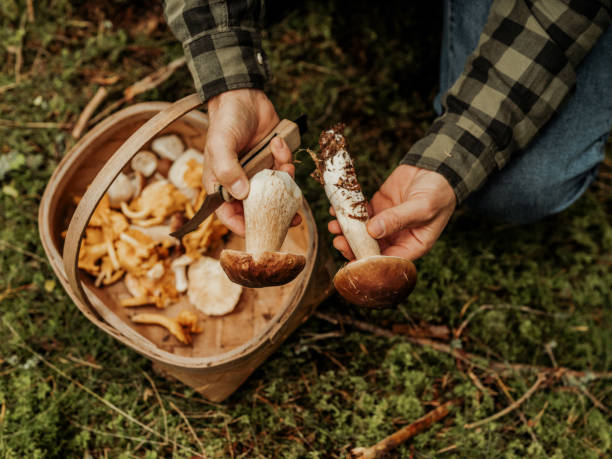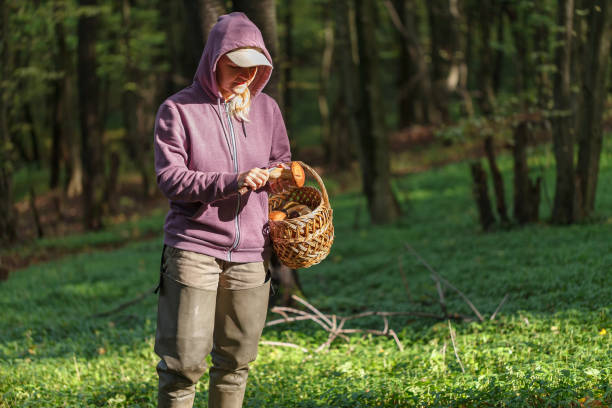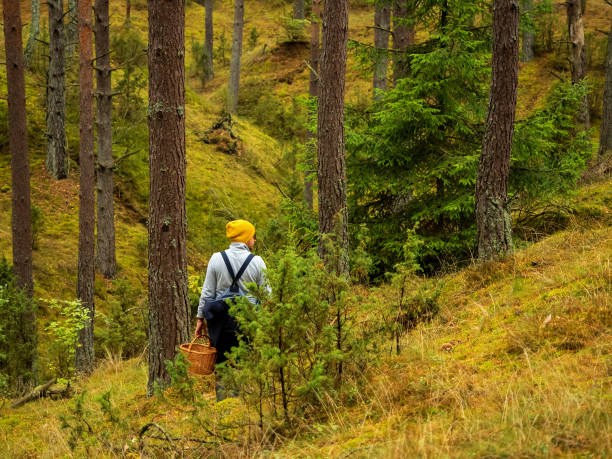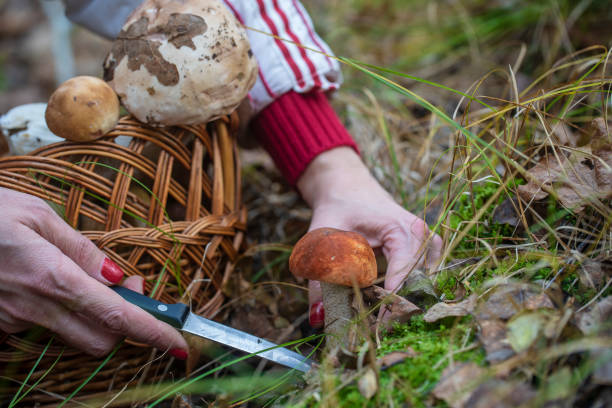In the enchanting world of mushroom foraging, enthusiasts find themselves immersed in the beauty of nature while seeking out elusive treasures. This article is a guiding light for those venturing into wild mushroom picking, offering insights into safe practices, the art of identification, and the myriad benefits of this age-old pursuit.
Picking wild mushrooms offers numerous advantages beyond the simple act of foraging. Firstly, it directly connects to the natural world, fostering a deeper appreciation for the environment and its intricate ecosystems. Mushroom foraging encourages individuals to explore diverse habitats, from forests to meadows, promoting outdoor recreation and physical activity. Moreover, foraging promotes mindfulness and sensory awareness as foragers immerse themselves in the sights, sounds, and scents of nature, enhancing overall well-being and reducing stress levels.

The best time for mushroom foraging typically occurs during the fall season, particularly after rain or moist weather periods. In temperate regions, this period often spans from late summer to early autumn when the ground is still warm and damp. These conditions are conducive to the growth of various mushroom species, making it an ideal time for enthusiasts to venture into forests, meadows, and woodland areas in search of edible fungi. Additionally, the cooler temperatures of the fall season help preserve the mushrooms and reduce the risk of spoilage during transportation.
However, mushroom foragers must exercise caution and expertise when picking mushrooms to avoid potential dangers associated with misidentification. One of the most critical aspects of foraging is accurate mushroom identification. Mistaking poisonous mushrooms for edible ones can have severe consequences, ranging from mild illness to fatality. It’s crucial to be well-versed in the distinguishing characteristics of different mushroom species, including their color, shape, size, and the environment in which they grow. Utilizing field guides, attending workshops, and seeking guidance from experienced foragers can significantly enhance one’s ability to identify mushrooms safely.

Foragers should be mindful of their surroundings and respectful of the ecosystem. Overharvesting can disrupt the natural balance of fungi populations and harm the habitats of other organisms. Practicing sustainable foraging techniques is essential, such as only collecting mushrooms in moderation and leaving some behind to propagate and support the ecosystem. Additionally, foragers should be aware of any local regulations or restrictions regarding mushroom foraging in specific areas to ensure compliance with environmental conservation efforts. By exercising caution, respect, and knowledge, mushroom foragers can enjoy the bounties of nature while minimizing risks and preserving the environment for future generations.
Wild mushrooms are rich in vitamins, minerals, and antioxidants, offering health benefits that rival those of cultivated varieties. By sourcing mushrooms directly from the wild, foragers bypass the environmental costs associated with industrial agriculture and reduce their reliance on store-bought produce. Additionally, the diversity of flavors and textures found in wild mushrooms adds depth and complexity to culinary creations, inspiring creativity in the kitchen and fostering a deeper connection to the food we eat.

Mushroom foraging, or mushroom hunting, is a rewarding outdoor activity connecting individuals with nature’s bounty. However, it’s essential to approach mushroom hunting with caution and knowledge, as some mushrooms can be toxic or even deadly if consumed. With proper guidance and understanding, anyone can enjoy the adventure of foraging for edible mushrooms while appreciating the beauty and complexity of the natural world.
Here’s a comprehensive guide on how to pick mushrooms in the wild and what to look for when doing so:
1) Educate Yourself:
Before embarking on a mushroom foraging expedition, educating yourself about the local mushroom species, particularly the edible ones and their toxic look-alikes, is crucial. Invest time studying field guides, attending workshops, or joining mushroom foraging groups led by experienced foragers. Additionally, familiarize yourself with the habitats where various mushroom species thrive, as this knowledge will enhance your chances of success.
2) Start Slowly:
For beginners, starting with a few easily identifiable edible mushrooms, such as chanterelles, morels, or oyster mushrooms, is advisable. These species generally have distinctive features that make them easier to identify than other mushrooms.
3) Pay Attention to Habitat:
Different mushroom species thrive in specific habitats. Some prefer deciduous forests, while others prefer coniferous forests, grasslands, or urban environments. Understanding the preferred habitat of your target mushrooms will increase your chances of finding them.

4) Observe the Environment:
Mushrooms are highly sensitive to environmental conditions such as temperature, humidity, and rainfall. Plan your foraging trips during the appropriate season when the conditions are conducive to mushroom growth. After rainfall, in particular, is an excellent time to hunt for mushrooms as they thrive in moist environments.
5) Learn to Identify Mushrooms:
Accurate identification is paramount when it comes to mushroom foraging. Pay close attention to the mushrooms’ key characteristics, including color, size, shape, texture, gill structure, and a ring or volva (cup-like structure at the base). Please take note of any unique features that distinguish edible mushrooms from their toxic counterparts.
6) Utilize Resources:
Carry field guides, mushroom identification apps, and other reference materials to assist you in identifying mushrooms while in the field. However, always cross-reference your findings with multiple sources to ensure accuracy, as misidentification can have serious consequences.
7) Practice Responsible Foraging:
When harvesting mushrooms, adopt sustainable practices to minimize environmental impact. Only pick mushrooms that you can positively identify as edible, leaving behind those that you’re uncertain about. Use a knife to cut mushrooms at the base of the stem rather than pulling them out, which helps preserve the mycelium and allows the mushrooms to reproduce.

8) Handle Mushrooms with Care:
Handle harvested mushrooms with care to prevent damage and preserve their freshness. Use a basket or mesh bag to allow airflow and prevent moisture buildup, which can cause mushrooms to spoil quickly. Avoid storing mushrooms in plastic bags, as they can become slimy and deteriorate rapidly.
9) Be Aware of Toxic Look-Alikes:
Many edible mushrooms have toxic look-alikes that closely resemble them in appearance. Exercise caution and carefully compare the characteristics of the mushrooms you find with those of known edible and poisonous species. When in doubt, err on the side of caution and refrain from consuming any mushrooms unless you are sure of their safety.
10) Consult Experts:
If you need more clarification about the identification of a particular mushroom species, seek guidance from experienced foragers, mycologists, or local mushroom clubs. Only consume a mushroom if you are confident in its identification and safety.
Conclusion:
Mushroom foraging is a fascinating journey that allows individuals to connect with nature and experience the thrill of discovery. However, it’s essential to approach mushroom hunting with respect, caution, and a commitment to learning. By educating yourself about local mushroom species, practicing responsible foraging techniques, and honing your identification skills, you can safely enjoy the abundance of edible mushrooms in the wild. Remember, knowledge and mindfulness are your best allies when it comes to mushroom foraging.
